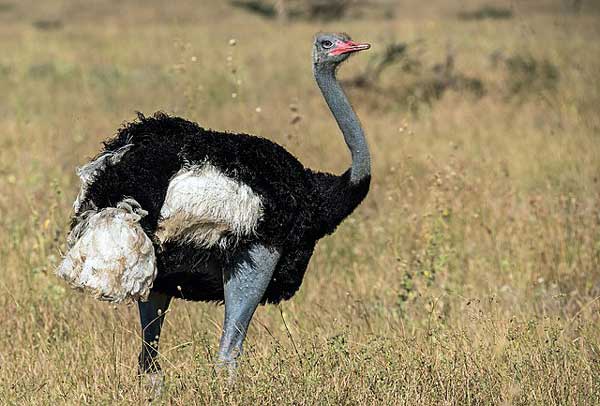We wish to present to you the top 10 biggest birds in the world. All weights are measured in kilogramme (kg)
| ANIMAL | WEIGHT(KG) | |
|---|---|---|
| 10 | TURKEY | 5-11 |
| 9 | MUTE SWAN | 9.2-14.3 |
| 8 | EMPEROR PENGUINS | 20-23 |
| 7 | LESSER RHEA | 15-25 |
| 6 | DWARK CASSOWARY | 17.6-26KG |
| 5 | GREATER RHEA | 20-27 |
| 4 | EMU | 31.5-37 |
| 3 | NORTH AND SOUTH CASSOWARY | 44-47 |
| 2 | SOMALI | 107 |
| 1 | OSTRICH | 104-140 |
#10. TURKEY(5-11kg)
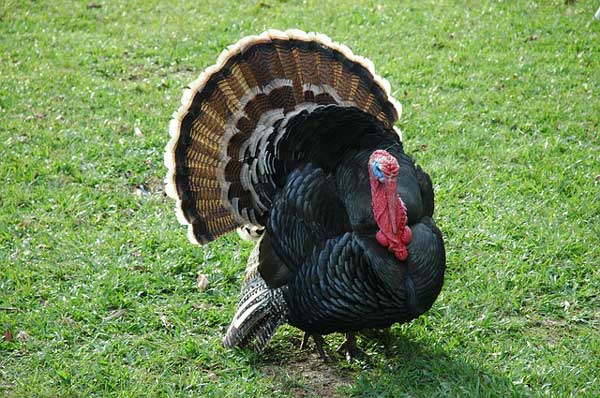
For the 10th spot we have the turkey which has an average weight of (5-11kg). They are of two types the domesticated ones which can’t fly because they are too fat and wild ones which can fly.
Notwithstanding their size, they are quiet agile fliers staying close to the ground and flying for no more than 400 m at a time, these behaviours become less frequent as the birds mature. Their given name of turkey is due to an early misidentification of the bird with an unrelated species which was imported to Europe through the country of Turkey.
#9.MUTE SWAN(9.2 – 14.3kg)

For the 9th spot on our list we have the Mute Swan, which has an average weight of 9.2 – 14.3kg. It is the heaviest of all waterfowl species. The term “mute” in its name is coined by the fact that it is the most quiet of all swan species. They are endemic to much of Eurosiberia.
Mute swans are monogamous in nature and tend to use the same nest year in year out with both the male and female, sharing care of it and rebuilding it as at when needed. Mute swans are very aggressive and territorial creatures as they don’t let other creatures come close to their nests or babies which are called cygnets. One can often see just a pair of mute swans alone in smaller lakes with their cygnets. They have a wide variety of vegetation such as grains like wheat, which they can get on land and submerged aquatic plants which they can get with their long necks.
#8. EMPEROR PENGUINS (20 – 23kg)
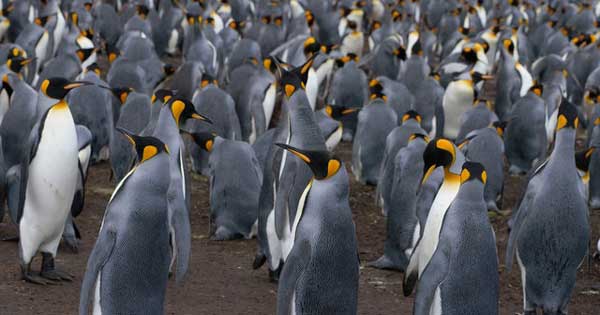
For the 8th spot on our list we have Emperor Penguins which have an average weight of 20 – 23kg.Next on our list is the Emperor Penguin. They are endemic to Antarctica. It is the tallest and heaviest of all penguins species.
They breed in the coldest region of any bird species with air temperatures and wind speeds reaching up to −40 °C (−40 °F), and 144 km/h (89 mph), respectively. They have adapted to this cold weather by having dense feathers which provide 80–90% of its insulation and also having a layer of sub-dermal fat which is up to 3 cm (1.2 in) thick.
#7. LESSER RHEA (15 – 25kg)
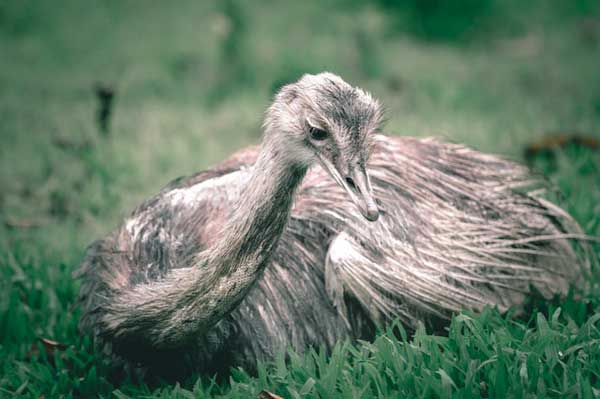
For the 7th spot we have the lesser rhea, also known as Darwin’s rhea. They have a weight range of 15 – 25kg. They are endemic to Altiplano, which means high plain in Spanish and Patagonia in South America.
They have a small head with long necks and long legs, giving it the ability to reach speeds of 60 km/h (37 mph), thus enabling them to outrun predators. They are mostly herbivorous creatures with their diet comprising saltbush, fruits and grasses, but they also sometimes eat other small animals such as lizards and grasshoppers.
#6. DWARF CASSAWORY (17.6 – 26kg)
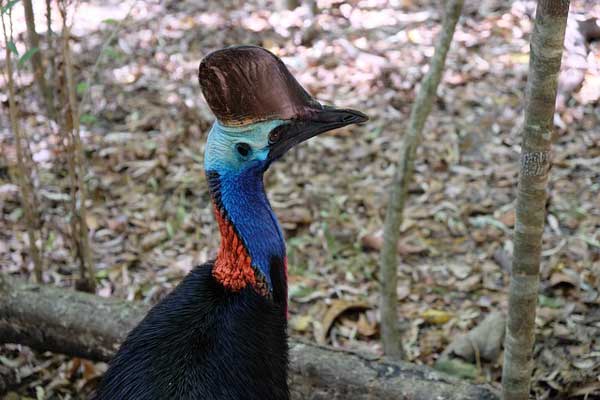
For the 6th spot on our list we have the dwarf cassawory, which has a weight range of 17.6 – 26kg. They are endemic to the mountain forests of the New Guinea and New Britain at elevations up to 3,300 m (10,800 ft).
They have a height range of 0.99m and 1.50m (3.25 and 4.92 ft). This species feeds mainly on fallen fruits, small animals and insects.
#5. GREATER RHEA (20 – 27kg)
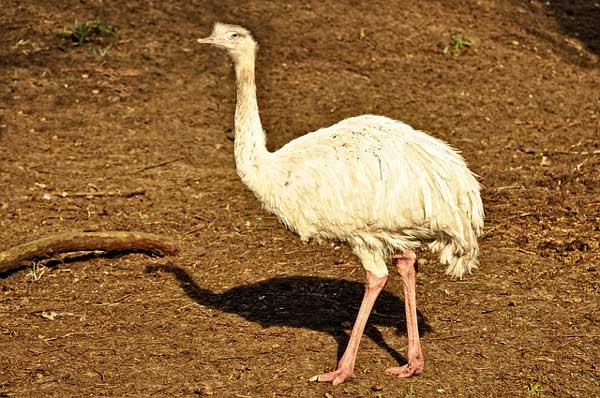
In 5th place we have the greater rhea also known as grey rhea, which has an average weight of 20-27kg.They are mostly endemic to Paraguay, Argentina, Uruguay and Bolivia. Its habitation consists of a variety of grasslands and grassy wetlands.
The greater rhea is the largest bird on the American continent. They have a typical height range of 1.4 to 1.7 m (4 ft 7 in to 5 ft 7 in),with the males being generally bigger than the females.
Their diet comprises fruits and seeds which are in season and also insects, scorpions and other birds. A small flock of these birds established themselves in Germany in the year 2000, when one male and five females escaped from a farm. They survived the cold winter and began breeding in the area. As at the end of 2017, a population of 250 birds was estimated, and it has now given them domestic status thus preventing them from being hunted.
#4.EMU (31.5 – 37kg)

For the 4th spot on our list we have the Emu which has an average weight of between 31.5 – 37kg.The Emu (Dromaius novaehollandiae) is the second-largest living bird by height, after its relative the ostrich.They are endemic to Australia.
The given name emu is said to have its origins from an arabic word which means enormous bird and was then made popular by Portuguese explorers.
Emus unlike other birds, are inquisitive birds and have been known to approach humans once they sense an unexpected human presence in their habitat, thus causing them to follow and observe the human. The inquisitiveness of the Emu is also their undoing as it makes them easy prey to aboriginals who hunt for their meat and poachers who hunt them for their economic value.
#3. NORTHERN AND SOUTHERN CASSOWARY. (44 – 47kg)
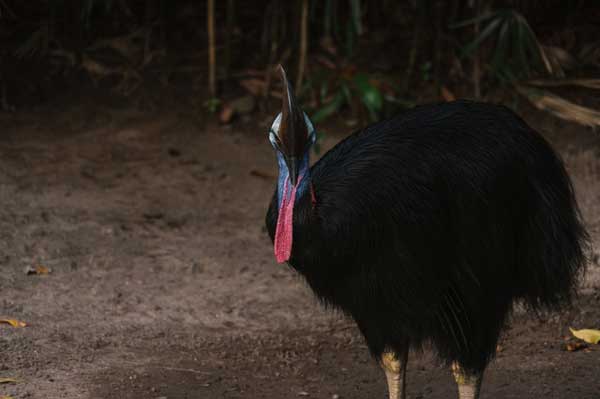
The Northern and Southern cassowary are third on the list and they are of two types: the Northern cassowary and Southern cassowary. they are endemic to Australia, new guinea and Indonesia.
The Northern Cassowary (Casuarius unappendiculatus) or simply known as the one-wattled cassowary. It is a large bird native to northern New Guinea.
The northern cassowary, on average, weighs about 44kg. The Northern Cassowary is a shy bird and its known to retreat further into its habitat when it notices a human presence. Their diet consists mainly of berries and small animals, such as rats, frogs, snakes and lizards.
The southern cassowary (Casuarius casuarius), or simply known as the double-wattled cassowary or Australian cassowary. This specie of cassowary is also a large bird which is native to the tropical rainforests of Indonesia, New Guinea, and northeastern Australia, and it prefers elevations below 1,100 m (3,600 ft) in Australia. they on average weigh 47kg.
Unlike its northern relative , the southern cassowary is a solitary bird, which pairs only in breeding season. Its diet consists of fungi and some insects, it also forages the floor for fallen fruits.
#2. THE SOMALI OSTRICH. (105kg)
Number two on our list is the Somali Ostrich (Struthio molybdophanes). The Somali ostrich was once considered a subspecies of the common ostrich but was later identified as a separate species in its own right.
The Somali Ostrich is native to the eastern part of Africa, particularly northern Ethiopia and all of Somalia. They weigh on average about 105kg with the females usually being larger than the males. This ostrich is generally similar to other ostriches and subspecies but with key differences being that its thighs are usually blue and not pinkish, during mating season the male thighs turn to a darker shade of blue, also its neck and tail lack the white feathers which are usually seen on other ostriches.
#1.OSTRICH.(104 – 140kg)

Yeah, I’m quite sure you must’ve already guessed this one right. Yup, the biggest bird in the world is the ostrich scientifically known as (Struthio camelus).
These birds are native only to Africa but can and are usually rared outside of the continent, so we can say it’s not too picky about its environment. The common ostrich usually weighs about 104kg, with exceptional males gaining a mass of up to 140 kg, which can be as heavy as two human bodies. Male ostriches can be from 2.0 to 2.7 m (6 ft 10 in to 9 ft 1 in) in height, while female ostriches range from 1.6 to 1.9 m (5 ft 8 in to 6 ft 6 in) tall.
Ostriches are birds which have extremely long and powerful feet but small wings, this anatomy robs them of the ability to fly like other birds and restricts their movement to the ground. But those long legs bless them with the ability to move quick on the ground, unlike other birds. When running ostriches can reach speeds of up to 70km/h, this makes them the fastest animal on two legs. They are also endurance runners as they can run for as long as 30minutes with speeds reaching up to 48km/h.
Ostriches also lay the largest eggs of all birds, as their eggs can weigh up to 1.4kg, over 20 times the weight of chicken eggs. They are also quite thick and heavy, usually needing special tools in order to crack them open. A single ostrich egg is as much as 14 chicken eggs. In some places, these eggs are served to guests and restaurant goers as luxury meals.
